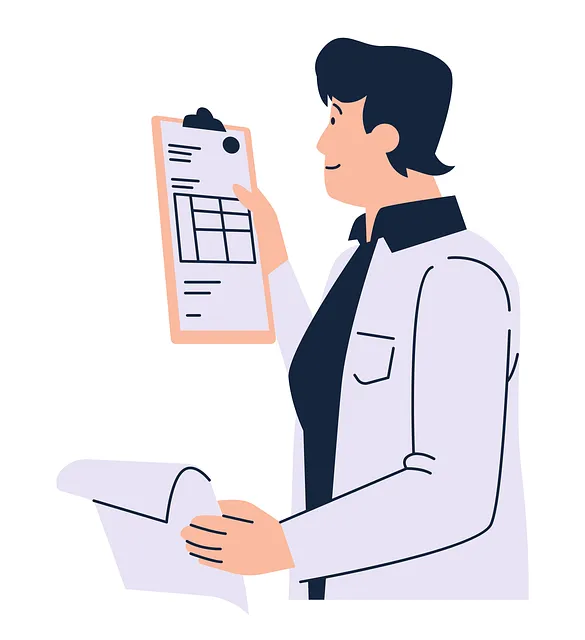To lower your auto insurance premium, take these steps:
1. Understand Your Policy: Review documents for unnecessary coverage or exclusions.
2. Evaluate Risk Profile: Maintain a clean driving record, install security features, and live in a low-risk area to reduce premiums.
3. Choose Right Coverage Levels: Assess needs and budget, opt for higher deductibles if comfortable with out-of-pocket payments.
4. Compare Quotes: Shop around from multiple insurers using online tools or direct contact.
5. Practice Safe Driving Habits: Adhere to speed limits, maintain safe distances, and complete defensive driving courses.
6. Take Advantage of Discounts: Bundle policies, use safe driver discounts, and maintain good credit scores.
7. Consider High Deductibles: Increase deductibles if stable financial situation and clean driving record.
8. Regularly Review Policy: Update provider about advanced training or clean record for potential discounts.
Looking to reduce your car insurance premium? This guide offers expert tips to help you navigate the process effectively. Understanding your auto insurance policy is the first step. Evaluate your risk profile by assessing factors like driving history and vehicle type. Choose the right coverage levels, compare quotes from multiple insurers, and adopt safe driving habits to save money. Additionally, utilizing discounts, maintaining a good credit score, considering high deductibles, and regularly reviewing your policy can significantly lower your auto insurance premium.
Understanding Your Auto Insurance Policy

Understanding your auto insurance policy is a crucial step in learning how to lower your auto insurance premium. Many drivers pay for coverage they don’t need or don’t fully comprehend. Take time to review your policy documents and break down the different sections. Understand what’s covered, what’s not, and any exclusions or limitations. This knowledge will empower you to make informed decisions about adjusting your coverage to better suit your needs, potentially reducing costs in the process.
By familiarizing yourself with common auto insurance terms and clauses, you can identify areas where you might be overpaying. For instance, if you have a high deductible but rarely file claims, consider raising your deductible. Similarly, if you own multiple vehicles, bundle them under one policy to take advantage of multi-vehicle discounts. Regularly reviewing and updating your coverage as your circumstances change can also help ensure you’re not paying more than necessary for your auto insurance.
Evaluating Your Risk Profile

Evaluating your risk profile is a crucial step in understanding how to lower your auto insurance premium. Insurance companies assess your risk based on various factors, including your driving history, vehicle type and safety features, location, and claims record. The more favorable these aspects are, the lower your premiums will be. For instance, maintaining a clean driving record by avoiding tickets and accidents can significantly reduce costs over time.
Additionally, consider the security features of your vehicle. Insurers often offer discounts for cars equipped with advanced anti-theft systems or air bags. Furthermore, if you live in a low-risk area with lower crime rates, you might be eligible for location-based savings. Regularly reviewing and updating these factors can help you navigate the market more effectively and secure better deals on your auto insurance policy.
Choosing the Right Coverage Levels

Choosing the right coverage levels is a crucial step in how to lower your auto insurance premium. Assess your needs and budget carefully before deciding on liability, collision, and comprehensive coverages. Remember, higher deductibles often lead to lower premiums. Opting for a higher deductible can significantly reduce costs, but ensure it’s an amount you’re comfortable paying out of pocket in case of an accident.
Comparing quotes from different insurance providers is another effective strategy. Each company has its own pricing structure and discounts, so shopping around allows you to find the best deal. Be open to raising your deductible or eliminating certain coverages that might be unnecessary for your situation. This targeted approach can help minimize costs without compromising on essential protection.
Comparing Quotes from Multiple Insurers

Comparing quotes from multiple insurers is a powerful way to lower your auto insurance premium. Don’t settle for the first quote you receive; instead, take the time to shop around and compare policies from several companies. This process allows you to identify the best combination of coverage and price that suits your needs.
Use online comparison tools or directly contact insurers to gather quotes. Be sure to provide accurate information about your driving history, vehicle make and model, and desired coverage levels. By doing so, you’ll gain a clear understanding of how different options can impact your auto insurance premium.
Adopting Safe Driving Habits

Adopting safe driving habits is one of the most effective ways to lower your auto insurance premium. It’s no secret that insurance companies charge higher rates for drivers with a history of accidents or moving violations. To avoid these costly increases, focus on consistent and defensive driving. This means adhering to speed limits, maintaining a safe following distance, and avoiding distractions like cell phones or eating while behind the wheel. Regularly checking your vehicle’s maintenance is also crucial; well-maintained cars are less likely to break down, reducing the risk of accidents and claims.
By prioritizing safety on the road, you demonstrate responsible behavior that insurers reward. This can include completing defensive driving courses to learn advanced safety techniques or implementing technology like anti-lock brakes (ABS) and electronic stability control (ESC), which offer discounts on many policies. Remember, how you drive matters; adopting these safe habits not only helps lower insurance costs but also ensures a safer experience for everyone on the road.
Utilizing Discounts and Promotions

Many insurance companies offer discounts and promotions that can significantly lower your auto insurance premium. One common discount is the safe driver discount, which rewards policyholders with lower rates if they maintain a clean driving record for a certain period. Additionally, bundling your car insurance with other policies, such as home or life insurance, often results in substantial savings.
Another way to reduce costs is by comparing quotes from different providers. Online platforms and tools make it easy to gather multiple offers and choose the best one that aligns with your needs. Regularly reviewing and updating your policy is also essential, as changes in your personal or vehicular circumstances can impact your premium. For instance, improving your credit score or completing a defensive driving course can lead to lower rates.
Maintaining a Good Credit Score

Maintaining a good credit score is one effective way to lower your auto insurance premium. Credit history plays a significant role in insurance companies’ risk assessment as it reflects your financial responsibility and reliability. A strong credit profile indicates that you’re likely to pay bills on time, including medical or legal fees arising from potential accidents. This reduced risk encourages insurers to offer competitive rates. Conversely, poor credit can lead to higher premiums as companies perceive individuals with bad credit as greater risks.
To enhance your credit score and subsequently reduce insurance costs, focus on timely bill payments, keeping credit card balances low, and regularly reviewing your credit report for errors. These practices demonstrate responsible financial behavior, which insurers value. As you build or improve your credit history, shop around for insurance quotes to find the best rates reflecting your improved risk profile.
Considering High Deductibles

When looking for ways to lower your auto insurance premium, one strategy often overlooked but proven effective is considering high deductibles. A deductible is the amount you pay out-of-pocket before your insurance coverage kicks in. Opting for a higher deductible can significantly reduce your monthly premiums since you’re agreeing to take on more financial responsibility in case of an accident. However, it’s crucial to ensure that you can comfortably afford the higher out-of-pocket expense should a claim occur.
To make this work for you, assess your financial situation and driving habits. If you have a solid emergency fund and rarely get into accidents or traffic violations, a higher deductible might be suitable. Compare quotes from different insurance providers to see how much you could save by making this adjustment, ensuring that you’re still adequately covered for any potential risks on the road.
Reviewing and Adjusting Your Policy Regularly

Regularly reviewing and adjusting your car insurance policy can be a powerful strategy to lower your auto insurance premium. It allows you to stay updated with changes in your driving habits, vehicle condition, and personal circumstances. For instance, if you’ve completed advanced driver training or maintained a spotless driving record without accidents or tickets for several years, inform your insurance provider. These updates could entitle you to significant discounts that could reduce your annual coverage costs substantially.
Additionally, re-evaluating your policy’s scope ensures you’re not paying for unnecessary coverage. Consider the value of your vehicle and opt for lower deductibles if they align with your financial capabilities. Remember, while saving on premiums is essential, ensuring adequate coverage to protect against potential risks is paramount. Thus, a balanced approach that considers both savings and security is ideal when reviewing and adjusting your car insurance policy.



